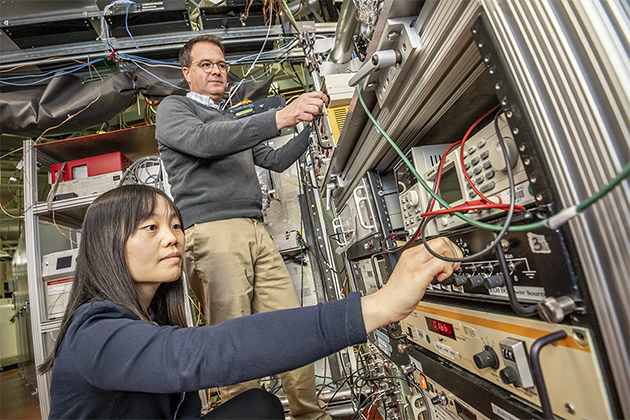Abstract The enhanced and direct immobilization of the enzyme horseradish peroxidase on poly(methyl methacrylate) (PMMA) microchannel surfaces to create a miniaturized enzymatic reactor for the biocatalytic oxidation of phenols is demonstrated. Enzyme immobilization occurs by physical adsorption after oxygen plasma…
Tag: Oxidation
Water-free manufacturing approach could help advance 2D electronics integration
The future of technology has an age-old problem: rust. When iron-containing metal reacts with oxygen and moisture, the resulting corrosion greatly impedes the longevity and use of parts in the automotive industry. While it’s not called “rust” in the semiconductor industry, oxidation is especially problematic in two-dimensional (2D) semiconductor materials, which control the flow of electricity in electronic devices, because any corrosion can render the atomic-thin material useless. Now, a team of academic and enterprise researchers has developed a synthesis process to produce a “rust-resistant” coating with additional properties ideal for creating faster, more durable electronics.
Could corrosion actually be helpful? New 3D printing technique might turn oxidation into an advantage
New research from Binghamton University, State University of New York could revolutionize 3D printing and how engineers think about oxidation.
Marine Seagrass Meadows Show Resilience to ‘Bounce Back’ After Die-Offs
A study in Florida Bay, one of the largest global contiguous seagrass systems, examined if a phytotoxin that accumulates as seagrass ecosystems become more enriched in nutrients prevents a marine seagrass, turtlegrass, from recruiting into open bare sediment following die-off events. While they do “bounce back,” long-term monitoring indicates the timeframe for recovery after major die-off events is at least a decade. Turtlegrass can successfully recruit into open bare sediment following die-off events due to biomass partitioning.
Experimentalists: Sorry, no oxygen required to make these minerals on Mars
Scientists at Washington University in St. Louis discovered that under Mars-like conditions, manganese oxides can be readily formed without atmospheric oxygen. The study from the laboratory of Jeffrey Catalano in Arts & Sciences was published Dec. 22 in Nature Geoscience.
Research with a peel: FSU study on banana browning could help tackle food waste
A team of FSU researchers investigated the formation and spread of brown spots on bananas, a striking case of biological pattern formation. In research published in Physical Biology, the team described how the spots appear during a two-day window, rapidly expand, but then mysteriously stall, leaving a sharp distinction between spots of brown and the still-yellow peel.
When using pyrite to understand Earth’s ocean and atmosphere: Think local, not global
Scientists have long used information from sediments at the bottom of the ocean to reconstruct the conditions in oceans of the past. But a study in Science Advances raises concerns about the common use of pyrite sulfur isotopes to reconstruct Earth’s evolving oxidation state. These signals aren’t the global fingerprint of oxygen in the atmosphere, according to new research from Washington University in St. Louis.
Atomic Defect Lines Suppress Deactivation of Iron Oxide Catalysts
A structure based on the low-cost, earth-abundant metal iron may be active enough to promote desired reactions without becoming “poisoned.”

Scientists Discover New Clue Behind Age-Related Diseases and Food Spoilage
Berkeley Lab scientists have made a surprising discovery that could help explain our risk for developing chronic diseases or cancers as we get older, and how our food decomposes over time.